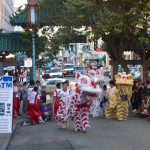Due to the COVID-19 pandemic, the usual spring meeting season for medical societies never got started. In San Francisco, all events hosting more than 1000 people were prohibited. As a result, the 2020 annual ASRA regional anesthesiology and acute pain medicine meeting was cancelled.
However, there were nearly 400 scientific abstract posters submitted to the meeting and posted online. For so many registered attendees, the ASRA meeting was an opportunity to share their latest research and medically challenging cases with their colleagues and solicit feedback.
Continue reading Conference Cancelled Due to COVID-19? Go Virtual!There was no way to preserve the complex structure of an ASRA meeting (e.g., workshops, plenary lectures, problem-based learning discussion, networking sessions), but a moderated poster session was feasible using common videoconferencing applications. The Chair of the 2019 ASRA spring meeting, Dr. Raj Gupta, took it to the next level by using StreamYard to simultaneously broadcast the video feed to multiple social media platforms (e.g., Twitter/Periscope, Facebook, YouTube). In addition to accessing the livestream for free, participants could make comments and pose questions to the speakers and moderator through their social media applications.
Dr. Gupta hosted 6 sessions, and these were archived on YouTube for later viewing. As an example, here is one session focused on regional anesthesia abstracts in which I participated:
Although it was disappointing to not have an ASRA spring meeting this year, something good came out of it. The livestreamed poster discussions were an innovative way to showcase the science and educational cases as well as leverage social media to attract a global audience. Since medical conferences may never completely return to pre-COVID normal, embracing technology and incorporating online sessions should be considered by continuing medical education planners going forward.




 San Francisco is the biggest little city. At just under 47 square miles and with more than 800,000 inhabitants, San Francisco is second only to New York City in terms of population density. Despite its relatively small size, “the City” (as we suburbanites refer to it) consists of many small neighborhoods, each with its own charm and character: Union Square, the Financial District, Pacific Heights, the Marina, Haight-Ashbury, Chinatown, Little Italy, Nob Hill, Russian Hill, SoMa (South of Market), the Fillmore, Japantown, Mission District, Noe Valley, Twin Peaks, Castro, Sunset, Tenderloin, and others. This is probably why die-hard New Yorkers love it so much.
San Francisco is the biggest little city. At just under 47 square miles and with more than 800,000 inhabitants, San Francisco is second only to New York City in terms of population density. Despite its relatively small size, “the City” (as we suburbanites refer to it) consists of many small neighborhoods, each with its own charm and character: Union Square, the Financial District, Pacific Heights, the Marina, Haight-Ashbury, Chinatown, Little Italy, Nob Hill, Russian Hill, SoMa (South of Market), the Fillmore, Japantown, Mission District, Noe Valley, Twin Peaks, Castro, Sunset, Tenderloin, and others. This is probably why die-hard New Yorkers love it so much. San Francisco is very family-friendly. If you’re debating whether or not to make a family trip out of #ANES18, my advice is to do it. Right around the convention center there are a number of attractions and events worth checking out. I highly recommend visiting the farmers market at the Ferry Building. While there, you can also take a ferry ride to a number of other destinations in the Bay Area (try Sausalito, a short trip that takes you past Alcatraz). For kids, there are parks within walking distance as well as the Children’s Creativity Museum, the San Francisco Railway Museum, Exploratorium, and the cable car turnabout at Powell and Market Street. Trips to Fisherman’s Wharf, Ghiradelli Square, or the aquarium are a short taxi or cable car ride away. In addition, runners will love running up and down the Embarcadero which gives you a view of the Bay Bridge and takes you past the City’s many piers. Shoppers will be in heaven, and foodies will have to make the impossible decision of choosing where to eat for every meal.
San Francisco is very family-friendly. If you’re debating whether or not to make a family trip out of #ANES18, my advice is to do it. Right around the convention center there are a number of attractions and events worth checking out. I highly recommend visiting the farmers market at the Ferry Building. While there, you can also take a ferry ride to a number of other destinations in the Bay Area (try Sausalito, a short trip that takes you past Alcatraz). For kids, there are parks within walking distance as well as the Children’s Creativity Museum, the San Francisco Railway Museum, Exploratorium, and the cable car turnabout at Powell and Market Street. Trips to Fisherman’s Wharf, Ghiradelli Square, or the aquarium are a short taxi or cable car ride away. In addition, runners will love running up and down the Embarcadero which gives you a view of the Bay Bridge and takes you past the City’s many piers. Shoppers will be in heaven, and foodies will have to make the impossible decision of choosing where to eat for every meal.
